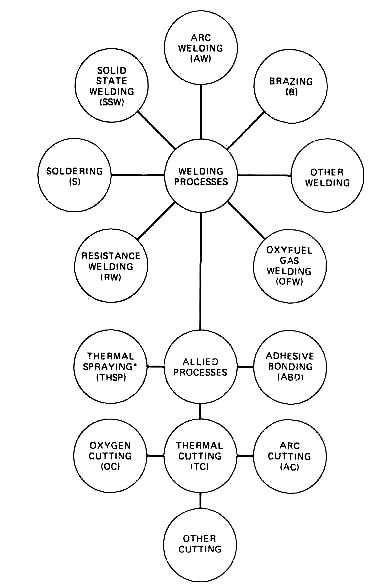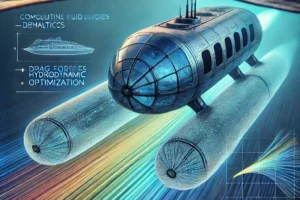High-frequency welding is a specialised method used to fuse thermoplastic materials together. It is sometimes referred to as Radio Frequency (RF) welding or the HF welding process. This novel approach has broad applications in many fields, including the production of packaging, automobiles, textiles, and medical devices. This technology creates heat and pressure using high-frequency electromagnetic waves, allowing materials to fuse and permitting flawless joining.
In recent years, high-frequency (HF) welding has gained increasing popularity for its precision and efficiency in creating quick and effective bonded components. This welding methodology, which has been in use since the 1930s, offers remarkable advantages in various industries. In this article, we will explore the step-by-step process, diverse applications, notable advantages, and working principles of high-frequency welding.
Mastering the Steps of High-Frequency Welding: A Comprehensive Guide

Preparation: Careful preparation is required before welding, including cleaning and matching the edges of the materials to be welded. This important phase makes sure that the fusion occurs properly and that a strong link forms.
Clamping: The prepared materials are firmly held together using clamps or a pneumatic device to guarantee accurate alignment throughout the welding operation. This makes sure that the succeeding stages will be accurate and stable.
Application of High-Frequency Energy: An electrode, typically composed of copper, is positioned on one side of the joint, while a grounding plate is placed on the opposite side. By passing high-frequency electric current through the electrode, an oscillating electromagnetic field is generated.
Heating and Melting: Heat is produced as a result of molecular movement that the oscillating electromagnetic field causes in thermoplastic materials. The materials get softer and melt along the joint line as a result of this heat, which primes them for fusion.
Pressure and Fusion: As the material reaches the desired melting point, pressure is applied using the clamping mechanism. The combination of heat and pressure allows for close contact between the melted surfaces, ensuring effective fusion. The substance then cools and hardens thus providing a strong and long-lasting bond.
Cooling and Finishing: Upon completion of the welding process, the joint is allowed to cool, stabilizing the fused area. Depending on the specific application, additional steps such as trimming or finishing may be performed to achieve the desired final product.
Precise fusion and perfect bonding can be easily achieved by following these steps for high-frequency welding processes, making it a favoured technology in a variety of sectors.
Understanding the Working Process
A high-frequency generator is used to generate electrical energy in HF Welding. This energy is delivered to the material via an electrode. This energy causes the molecules of the material to move, which in turn causes heat to be produced. Eventually, the heat softens the material, causing it to fuse together and be linked by exerting pressure. The welding technique does not require any outside heat. They form a robust weld after the connecting surface cools under constant pressure, thereby producing a desirable product.

Unveiling the Advantages of High-Frequency Welding
High-frequency welding presents numerous advantages, including:
- Fast cycle times: High-frequency welding enables rapid production cycles, allowing for efficient manufacturing processes and increased productivity.
- Inexpensive tooling: Compared to other welding methods, high-frequency welding often requires less complex and costly tooling, making it a cost-effective choice for various applications.
- Efficient energy utilization: This welding technique optimizes energy utilization by focusing heat directly on the welding area, minimizing energy waste and promoting efficient operation.
- Clean, environment-friendly process: High-frequency welding does not involve the use of adhesives, solvents, or additional consumables, resulting in a cleaner and more environmentally friendly manufacturing process.
- Reliable technology: High-frequency welding has been widely adopted and proven as a reliable joining method, offering consistent and high-quality welds.
- Repeatable multi-layer welding: The precision and control provided by high-frequency welding allow for consistent and repeatable welding of multiple layers, ensuring the integrity and strength of the welds.
- Strong, durable, and consistent welds: High-frequency welding creates strong and durable bonds, providing excellent tensile strength and resistance to stress. The process ensures consistent and uniform weld quality, contributing to the overall reliability of the welded components.
High-frequency welding is used in a wide range of industries, including the production of inflatable items, PVC and PU textiles, tents, banners, conveyor belts, automobile interior components, medical bags, and more. Its adaptability and dependability make it a popular choice for a variety of manufacturing applications.
Influential Factors in High-Frequency Welding
To obtain optimal outcomes, the high-frequency welding process relies on careful management of numerous factors. The following variables are critical:
Electrical Power: The quantity of electrical power supplied to the welding process has a direct impact on the amount of heat created and, as a result, the fusion of the materials. Controlling the electrical power ensures that the proper level of heat is generated for efficient bonding.
Pressure: Applying pressure during high-frequency welding is critical for establishing appropriate contact and fusion between the materials. The correct pressure aids in the formation of strong and permanent bonding, which contributes to the overall quality of the weld.
Welding Time: The length of time that high-frequency energy is applied plays an important role in obtaining the desired level of melting and fusing. Precise control of the welding time ensures consistent and reliable bonding throughout the joint.
Cooling Time: After the welding process is completed, allowing sufficient time for cooling is essential for stabilizing the fused area. Proper cooling helps to solidify the material, enhancing the strength and durability of the weld.
The selection and adjustment of these parameters are determined by the welding application’s specific requirements. High-frequency welding can be adjusted to produce the desired outcomes by carefully examining and optimising these parameters, providing efficient and effective bonding in diverse manufacturing processes.
Applications of High-Frequency Welding
High-frequency welding, known for its capability to create robust and reliable bonds between thermoplastic materials, finds extensive application in various industries. Some of the common applications of high-frequency welding include:
Packaging Industry
In the packaging sector, this welding is often used to create things such as blister packs, clam-shell packaging, clear plastic boxes, bags, and pouches. This process generates secure and airtight seals, ensuring the packaged products’ integrity and protection. High-frequency welding is also used in the food business because of its capacity to generate airtight seals, which benefits in the preservation of food goods.
Automative Industry
High-frequency welding is used in the automotive industry to make a variety of components such as door panels, instrument panels, seat coverings, sun visors, and airbags. This process allows for the exact and long-term connecting of various materials such as PVC, leather, and fabrics. The strong and long-lasting bond created by high-frequency welding is critical for meeting the requirements of numerous automobile components.
Medical Industry
More so, High-frequency welding is essential in the production of medical equipment and supplies. It is used to make vital products such as blood and IV bags, urine bags, medical mattress coverings, surgical gowns, and a variety of other medical devices. This welding procedure guarantees sterility as well as leak-proof seals, ensuring the integrity and safety of these vital medical items.
Textile Industry
Utilization of high-frequency welding in the textile industry helps to create waterproof and airtight seams in fabrics. It is widely used to make outdoor gear like tents, awnings, tarpaulins, inflatable structures, and protective garments.
Stationery and Leather Goods
Stationery products such as folders, binders, and wallets are made using high-frequency welding. It allows for the construction of precise and long-lasting seams in leather, PVC, and synthetic fabrics.
Air and Liquid-Tight Containers
High-frequency welding is often employed to create airtight or liquid-tight seals in containers, tubes, and tanks. These containers are suitable for the storage of liquids, chemicals, or gases.
Advertising and Signage
Large-scale banners, billboards, and signage are made using high-frequency welding. It allows for the production of robust, weather-resistant seams that ensure durability and lifespan.
Electronics Industry
Electronic components and gadgets are also manufactured using high-frequency welding. It allows for the secure and exact installation of plastic parts, connectors, and housings.
These are only a few examples of the numerous applications for high-frequency welding. Because of its versatility, speed, and capacity to form strong bindings, it is a valuable technology in sectors that use thermoplastic materials.
High-Frequency Welding Machine
A high-frequency welding machine is a specialised piece of equipment used for welding procedures. Its purpose is to create and control the high-frequency electromagnetic waves required for welding operations.
High-frequency welding machines have revolutionised thermoplastic material joining, providing industries with a powerful and fast way for forming strong and dependable bonds. This cutting-edge technology has found uses in a variety of industries, including packaging, automotive, textiles, and medical equipment manufacture. In this post, we will look at how a high-frequency welding equipment works, its major components, and the advantages it provides to many industries.
Understanding High-Frequency Welding Machines
High-frequency welding machines, also known as radio frequency (RF) welding machines, use electromagnetic waves to generate heat, allowing thermoplastic materials to fuse. These machines generate an oscillating electromagnetic field while operating at frequencies ranging from 27 to 40 MHz. This field causes molecular mobility in the materials, which results in localised heating. As a result, the thermoplastic materials soften and melt along the joint line, allowing for successful fusion and the formation of strong, long-lasting bonds.
Key Components of the machine:
Power Supply: The power supply unit delivers the electrical energy required to run the machine. It transforms the incoming electricity into high-frequency alternating current (AC), which is then used in the welding process.
High-Frequency Generator: The high-frequency generator is in charge of producing the high-frequency electromagnetic waves needed in the welding process. It generates oscillating current at the necessary frequency, which is typically between 27 and 40 MHz.
Electrodes: The machine is equipped with a pair of electrodes, typically made of copper or other conductive materials. These electrodes transmit the high-frequency energy to the materials being welded. They are designed to efficiently deliver the electromagnetic waves and create the necessary heat for fusion.
Clamping Mechanism: A clamping device is used to keep the materials in position throughout the welding process. It maintains perfect alignment and applies the required pressure for strong and consistent bonding.
Control System: The control system enables the operator to set and alter parameters such as power level, welding time, and pressure. It allows for greater flexibility and precision in directing the welding process based on the individual needs of the materials being connected.
Cooling System: During the fusion process, high-frequency welding generates heat. As a result, a cooling system is built inside the machine to prevent overheating. It may include fans, water cooling, or other techniques to keep the working temperature at an optimal level.
Each of these parts work together to provide the necessary power, generate high-frequency electromagnetic waves, apply pressure, and control the welding parameters, resulting in effective and dependable high-frequency welding of thermoplastic materials.











